
 ABSTRACT: Because science currently tends toward reductionism, taxon-oriented
courses such as herpetology require a multidisciplinary, concept-oriented perspective. Such
an approach encourages integration of ideas rather than a focus on details. One must learn
to ask and answer questions and to make mental connections rather than merely acquire facts.
Few career opportunities exist for a "herpetologist," and undergraduates are better off
acquiring a diversity of intellectual skills and tools. Nonetheless, organisms and their
particulars continue to motivate and stimulate us.
ABSTRACT: Because science currently tends toward reductionism, taxon-oriented
courses such as herpetology require a multidisciplinary, concept-oriented perspective. Such
an approach encourages integration of ideas rather than a focus on details. One must learn
to ask and answer questions and to make mental connections rather than merely acquire facts.
Few career opportunities exist for a "herpetologist," and undergraduates are better off
acquiring a diversity of intellectual skills and tools. Nonetheless, organisms and their
particulars continue to motivate and stimulate us.


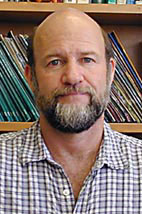
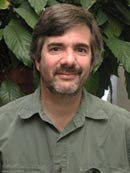
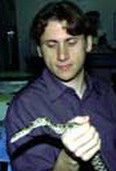
Despite the fact that our department contains a large number of researchers studying reptiles and amphibians (Pianka, Hillis, Ryan, Cannatella, Bull, Crews, and Dudley), none of us were hired as herpetologists. This reflects our department's strong bias toward conceptual rather than taxonomic specialties, and this bias influences the structure of the herpetology course we offer at the University of Texas. During the last few decades the excitement generated by advances in molecular biology has fostered a trend toward reductionism with the result that taxonomic-based courses became quite unfashionable and were dropped from many curricula. How do taxon-based courses such as herpetology survive in the face of such trends? One answer is that the way science is done changes. In recent years, there has been a new trend in organismal and population biology, a trend towards multidisciplinary studies that tend to unify rather than isolate fields. Phylogenetics is no longer the exclusive domain of the taxonomist; phylogenetic trees are becoming widely exploited in evolutionary studies of morphology, behavior and ecology. The field of environmental or ecological physiology now embraces techniques of selection analyses and quantitative genetics. Behavioral ecologists have been reminded that sensory systems guide behaviors and that these sensory systems are not created de nova in response to every environmental challenge but have an evolutionary history that must be interpreted to understand fully how and why animals behave in the ways that they do. In conservation biology, concepts such as conspecific cuing (developed by behaviorists studying reptiles) are now part of their lexicon. Another answer is that students of biology (ourselves included) continue to find organisms interesting. A taxon-based course such as herpetology serves students best when it reviews the entire biology of the organism, allowing students to elucidate and integrate relationships among different aspects of its biology. At the same time, the integration rather than isolation of concepts forces those of us who teach to go beyond our own intellectual domains. Thus, teaching of herpetology is not just the domain of herpetologists. W. Frank Blair, who taught herpetology at The University of Texas for many years until his death in 1984, became interested in frogs as part of his research in speciation and hybrid zones in mammals. We now team teach a class in herpetology, which we believe contains the necessary ingredients for the nearly "perfect" course. Each of us brings a very different perspective to the subject, although all of us embrace an evolutionary approach. This is quite a challenge, because expertise with a wide range of biology is required. We cover a wide diversity of topics including thermoregulation and sustainable population density, developmental plasticity and anti-predator behavior, digestive physiology and life history strategies (e.g., ontogenetic shift from omnivory to herbivory), how auditory physiology influences speciation, etc. We are exceedingly fortunate that our "closet herpetologists" span the entire range from molecules to morphology to mating behavior to metapopulations. Hillis is a molecular systematist, Cannatella is a curator and a functional anatomist, Ryan is a behavioral ecologist, and Pianka is a population and community ecologist. 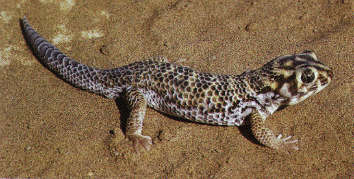 Some in our department think that we have too many herpetologists. This is purely historical accident, for we have always recruited for behaviorists, ecologists, physiologists, systematists, etc. It just happened to turn out that, again and again, the best person we could find just happened to work with amphibians and/or reptiles (does this mean that herps are superior subjects and/or that they attract the best people?). 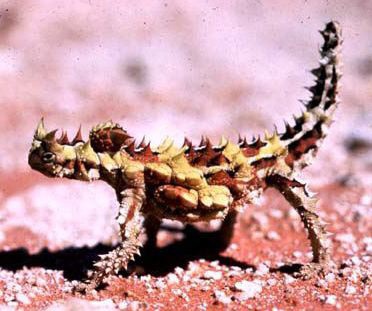
Australia's thorny devil Moloch horridus. This 3 hour course was first offered in spring 1989 by Hillis, Ryan, and Pianka and was offered again in the springs of 1993 and 1997 by the four of us. Each of us attended most lectures. Only ten students, including several graduate students, enrolled the first time. In the subsequent offerings, we had, however, to turn students away due to space limitations. There appears to be a very healthy interest in organismal courses on this campus. We could easily fill this course to capacity each year but our other teaching commitments limit us to offering herpetology less frequently. Our one semester herpetology class consists of thirty 75 minute lectures (3 of which are devoted to examinations), with one 3 hour laboratory each week for 15 weeks (two of these labs are practical exams) plus several field trips. No textbook is used, but many handouts are given out and numerous readings from the primary literature are assigned. Because we team teach a taxon-oriented course, we emphasize a problem-oriented approach to biological questions. Accordingly, we organize our class around the layers in the biological cake rather than the slices. 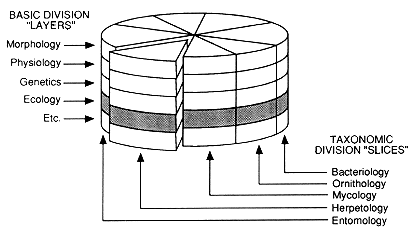 Disciplines of biology can be represented as a layered cake, with functional layers (horizontal) and taxonomic slices (vertical). Herpetology has a greater depth than ecology, which has a greater taxonomic breadth. In our herpetology class, however, a student gets an entire slice of the biological cake, rather than just a mere layer. Our course stresses concepts, and covers a wide range of topics, ranging from molecular to cytological to physiological to behavioral to ecological, all illustrated using herpetological examples. Hillis begins the class with a lecture on the history of herpetology, followed by a discussion of species concepts and various approaches to classification including phylogenetic systematics and modern molecular techniques. Cannatella lectures on the diversity of amphibians and reptiles (illustrated with ample phylogenies), the origin and diversity of amphibians and the transition from water to land (locomotion, respiration, hearing, feeding, reproduction), with heavy reference both to the fossil record and to contemporary extant forms. Hillis lectures on the genetics, cytogenetics, hybridogenesis, parthenogenesis, and the evolution of sex determination. (Throughout the class, color slides depicting the wide variety of exquisite herps are used extensively and we all convey considerable enthusiasm for herp subjects.) A lecture is given on limb reduction and leglessness among squamates and the correlates of increasing fossoriality, such as changes in vertebrae and eye adaptations. (Click on photo to learn more about these lizards.) In 1993, David Crews gave a guest lecture on the physiology of reproductive behavior in lizards. In 1997, Carl Gans gave a guest lecture on burrowing mechanics of amphisbaenids. Cannatella discusses the functional anatomy of feeding in larval and adult frogs and the transition at metamorphosis. Ryan lectures on sensory biology, behavioral and physiological energetics, the ontogeny of navigation systems in birds versus reptiles, visual and auditory communication, courtship, mating, parental care, and social behavior. Pianka talks about population and community ecology, which include spatial and temporal patterns of activity, thermoregulation, foraging and feeding ecology, reproductive tactics and life history, demography, metapopulation structure, interspecific competition, resource partitioning, niche theory, parasitology, anti-predator adaptations, mimicry, ecomorphology, guild structure, community organization, landscape ecology and ecological biogeography. Labs cover basic morphology, diversity, and taxonomy of salamanders, frogs, (one entire lab is on frog calls), turtles, crocodilians, lizards, snakes, with an emphasis on the herpetofauna of Texas, although several labs are devoted to a worldwide perspective. Living animals are used as well as many skulls and skeletons plus preserved museum specimens. Several lab sessions include guest speakers, graduate students currently doing research on various herpetological problems. One field trip in the evening centers around frog call playback experiments, others are to south Texas and east Texas, respectively (in 1989, we had a very successful long 4-day weekend field trip to Big Bend in west Texas where we found a fossil marine turtle and ran roads at night collecting snakes). Field trips are made to demonstrate that herpetology can be enjoyable as well as intellectually stimulating. Instructors set appropriate examples for student behavior. A brief trip to a campus pond allows observation of several turtle species. An evening field trip centers around frog call playback experiments. Short day trips are used to demonstrate field techniques and to introduce conservation biology in the context of local herps, including the Houston Toad and Austin's endemic Barton Springs Salamander. Longer weekend trips include expeditions to the Rio Grande Valley, the Hill Country, the Big Thicket, and Big Bend National Park. 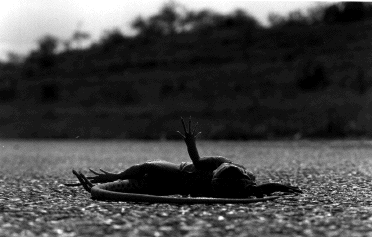 D.O.R. ("Dead on Road") Crotaphytus. R. I. P. No herpetology course can be fully comprehensive; students probably finish our class with little understanding of the systematics of cheloniid sea turtles or the physiology of Sphenodon. But such gaps will always exist. We prefer that students acquire the intellectual tools not only to fill these gaps but also to make new connections such that other gaps are uncovered. Returning to our initial question: How does a taxon-oriented course such as herpetology survive? It is likely no coincidence that most professional herpetologists kept amphibians and reptiles as pets or pursued them in the field. Reptiles and amphibians get our attention, so much so that we cannot help but ask what a female tungara frog hears when a male calls, or whether the troglobytic Texas Blind Salamander can possibly be closely related to its surface-dwelling neighbors, or why there are so many species of lizards in the Australian deserts. The animals make students of us all, leading us to question, to think, and to try to explain. To go to our Herpetology class home page, click here: Herpetology 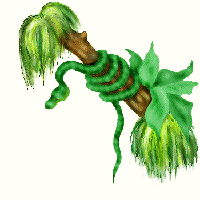 Some Other Neat Herpetology Links:
Herpetology, American Museum of Natural History Herpetology at the University of Florida David Wake's website Dr. Laurie Vitt's home page Savanna River Ecology Lab, Herpetology 
Return to Pianka lab page |